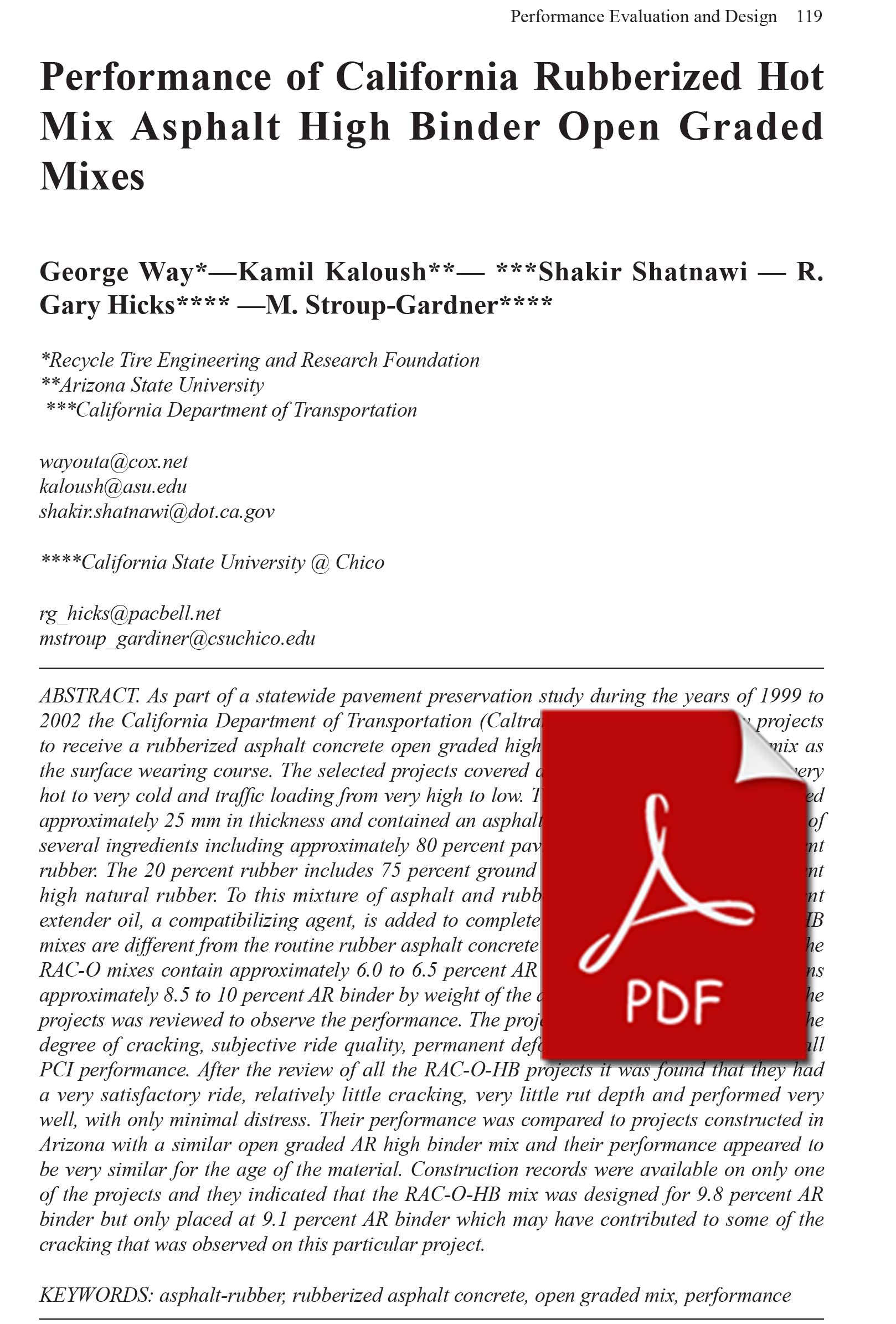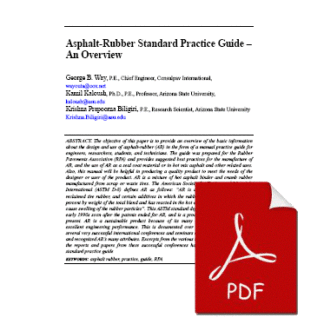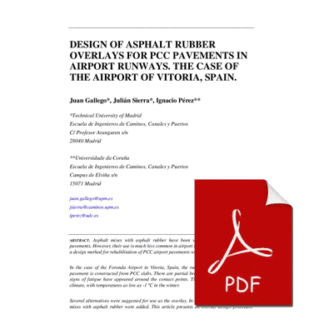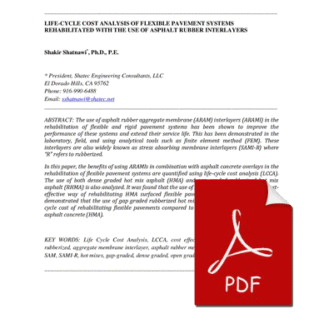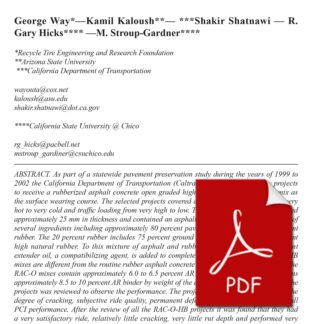Description
As part of a statewide pavement preservation study during the years of 1999 to 2002 the California Department of Transportation (Caltrans) selected six highway projects to receive a rubberized asphalt concrete open graded high binder (RAC-O-HB) hot mix as the surface wearing course. The selected projects covered a wide range of climate from very hot to very cold and traffic loading from very high to low. The RAC-O-HB mixes were placed approximately 25 mm in thickness and contained an asphalt-rubber (AR) binder consisting of several ingredients including approximately 80 percent paving grade asphalt and 20 percent rubber. The 20 percent rubber includes 75 percent ground waste tire rubber and 25 percent high natural rubber. To this mixture of asphalt and rubber approximately 2 to 6 percent extender oil, a compatibilizing agent, is added to complete the formulation. The RAC-O-HB mixes are different from the routine rubber asphalt concrete open graded mixes (RAC-O). The
RAC-O mixes contain approximately 6.0 to 6.5 percent AR whereas the RAC-O-HB contains approximately 8.5 to 10 percent AR binder by weight of the dry aggregate. In 2007 each of the projects was reviewed to observe the performance. The projects were observed in terms of the degree of cracking, subjective ride quality, permanent deformation (rut depth), and overall PCI performance. After the review of all the RAC-O-HB projects it was found that they had a very satisfactory ride, relatively little cracking, very little rut depth and performed very
well, with only minimal distress. Their performance was compared to projects constructed in Arizona with a similar open graded AR high binder mix and their performance appeared to be very similar for the age of the material. Construction records were available on only one of the projects and they indicated that the RAC-O-HB mix was designed for 9.8 percent AR binder but only placed at 9.1 percent AR binder which may have contributed to some of the cracking that was observed on this particular project.

